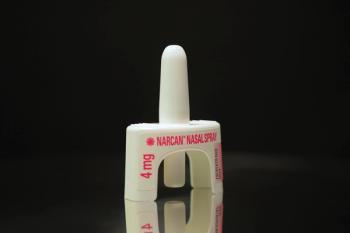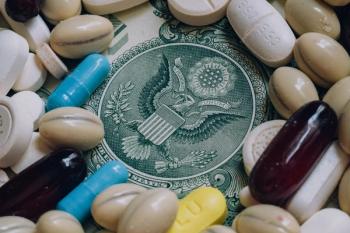
Progress report: U.S. development of a biosimilar pathway
As the first biosimilar has yet to make its way through the approval process, many practical and hypothetical questions remain
Taking as a model the 1984 Drug Price Competition and Patent Term Restoration Act (the Hatch-Waxman Act), which established a generic pathway for small-molecule drugs, the Biologics Price Competition and Innovation Act of 2009 (BPCI) builds on its provisions to meet contemporary technological advances in the development of drugs.
The result gives FDA the power to approve the registration of follow-on biological products that are similar to and in some cases interchangeable with products already approved for sale.
Application guidelines
As prescribed by BCPI, the application for a biosimilar must follow these guidelines:
- Be highly similar to the reference product without clinically meaningful differences in safety, purity, and potency
- Prove biosimilarity using data from analytical studies, animal studies, and clinical studies that are sufficient to demonstrate safety, purity, and potency in one or more appropriate conditions for use for which the reference product is licensed and intended to be used
- Employ the same biological mechanism(s) of action as those of the innovator product
- Indicate the conditions(s) of use prescribed, recommended, or suggested in the proposed product labeling
- Include proof that the biosimilar drug has the same route of administration, dosage form, and strength as that of the innovator product
- Provide information showing that the facility where the biological product is manufactured, packed, or stored meets the same safety standards as the original product
Despite the support of the Affordable Care Act in 2010 and subsequent tweaking of pathway guidelines last year, a process that added three draft guidance document, biosimilars have yet to make use of the abbreviated licensure pathway and place a product in the U.S. marketplace.
In its guidance, FDA recommends that applicants provide a risk-based, “totality of the evidence” approach to support a demonstration of biosimilarity. Applicants are also counseled to use a stepwise approach in their development of biosimilar products.
The numbers
IMS Health has reported that sales of biosimilars are expected to reach between $1.9 billion and $2.6 billion, up from $378 million in the first half of 2011.
In a study that highlighted 11 widely used biologics, Express Scripts estimated that with the use of biosimilar products, the United States could save $250 billion over the course of 10 years.
While the difference in price between traditional brands and their generic versions may be as high as 90%, many payers believe total savings from the use of biosimilars would be 10% to 30%, less than the initial estimation of 30% to 40%, according to survey results from Xcenda, a managed market consultancy for biotechnology based in Charlotte, N.C.
Barriers to a pathway
The advantage of the biosimilar pathway is that it requires only an abbreviated approval process that would be shorter than the process designed for a biologics licensing application (BLA) - the route chosen by Teva to market its version of Amgen’s Neupogen (filgrastim), for example - but more rigorous than that required of a small-molecule generic.
The follow-on biologic manufacturer has the benefit of piggybacking onto research generated for the patent of the innovator drug, saving the expense and time of duplicating trials already conducted.
Issues and questions
Despite a shorter approval route, the burgeoning industry is running into a few roadblocks, which include lack of clear guidelines; confusion over the assessment of interchangeability, which in turn affects drug substitution; and the naming of the new drugs.
According to Molly Burich, assistant director, reimbursement strategy and health policy for Xcenda, it is unclear whether an established biosimilar pathway should come before or after manufacturers apply for the drug’s approval, because no biosimilars have reached the market yet.
“There are several top-selling biologics coming off patent in the next few years, providing an opportunity for biosimilars in the U.S. marketplace, but we have yet to see whether biosimilars can prove to be as safe and effective as their branded counterparts,” she said. “After a biologic approval, post-marketing data will be important to assess the impact of biosimilar products.”
Guideline goals
Samuele Butera, vice president and head of pharmaceuticals, Sandoz North America, supports the flexibility of the draft guidance and expects that FDA will provide similar science-based, pragmatic approaches in its final guidelines.
“Limited access to high-quality biologics due to cost of treatment constitutes an unmet medical need in the United States and elsewhere,” he said. “The key is how the FDA will interpret and implement these guidelines, especially around clinical trial requirements. It is important to recognize that the goal of a biosimilar trial is to prove similarity to the originator and not confirm safety and efficacy all over again.”
Sandoz is targeting biosimilars for monoclonal antibodies that treat cancer and autoimmune disorders. The company is focusing on four molecules in six Phase 3 clinical trials.
Interchangeability
At Amgen, a biotechnology company based in Thousand Oaks, Calif., Gino Grampp, executive director of regulatory affairs, affirmed that “Amgen has long supported a biosimilar pathway in the United States and Europe.”
He expressed satisfaction with FDA’s clear guidance and consistent pathway for moving biosimilars through the pipeline. However, he said, FDA has not yet clearly created a process for determining interchangeability - an important consideration, since patients often switch drugs based on personal effectiveness.
“Europe has laid out the science, and the FDA has engaged in discussions with manufacturers who represent many drugs covering a spectrum of disease states, including 11 reference products, on how to implement a pathway,” he said.
With its experience in developing drugs for cancer and rheumatoid arthritis, Amgen plans to bring six biosimilars to market - four oncology drugs and versions of two rivals to the autoimmune agent Enbrel. Its cancer biosimilars will challenge Roche’s cancer drugs Avastin, Herceptin, and Rituxan, and Eli Lilly’s Erbitux.
According to Grampp, the company plans to produce biosimilars in order to provide new therapeutic options, rather than out of concern about competition for its branded drugs.
He predicts that 2017 will most likely be the year for the first biosimilar to hit the U.S. marketplace depending on how long studies take to complete and what drugs come off patent. Grampp said, however, that not every biologic is ripe for development of a follow-on drug.
Cost containment
Looking through the lens of a pharmacy benefits manager (PBM), Peter Wickersham, vice president, cost of care for Prime Therapeutics based in Eagan, Minn., said that biosimilars are the missing link to keeping the cost of drugs down.
“Overall drug spend rose only 2.7% last year due to generics, which enabled PBMs and plans to construct programs around their use. We need the new pathway in order to be actionable and functional.”
Patent expirations
FDA has granted reference drugs a 12-year exclusivity period, during which the follow-on biologic manufacturer cannot refer to the data submitted by the innovator in its original application for FDA approval. Two federal budget proposals request a modification, limiting exclusivity to seven years.
While some industry experts believe that patent exclusivity might delay the arrival of biosimilars, Everett Neville, vice president, pharmaceutical strategy officer for Express Scripts, a pharmacy benefits manager based in St. Louis, said that originator drugs should have a period of patent protection. Of greater concern to Express Scripts are the patents that are set to expire in the next few years.
“Once these patents expire, these therapies would be likely candidates for biosimilars. At that point, the primary obstacle that may delay biosimilar manufacturers from bringing these more affordable products to market within the United States would be uncertainty about the approval process for biosimilars,” Neville said.
BPCI calls for a four-year waiting period between the date of the innovator’s license application and that of the follow-on biologic. Once the biosimilar hits the marketplace, it will receive a one-year exclusivity period.
More than 40 biologics will face patent expiration between 2013 and 2020, worth $65 billion in sales, according to Covance, a biopharmaceutical development services company.
Drug substitution
While BPCI clearly notes the importance of interchangeabiity between biologics and their follow-on counterparts, the issue of substituting the new drugs at the pharmacy level is not written in stone.
It is difficult to determine interchangeability and whether substitution is warranted, said Xcenda’s Burich - especially since patients can react differently to the same drug. “If there isn’t interchangeability, substitution of a biosimilar will not be automatic-at least not initially,” she said.
According to Grampp, his company supports safe substitution of biosimilars if the drugs are interchangeable, patients are included in the discussion, and pharmacists communicate with physicians after the fact, not concurrently.
“We are surprised by the ‘notification provision,’ which offers a real disadvantage,” he said. “We are concerned with accurate clinical results at the patient level, and if a drug loses effectiveness, we can look at patients’ electronic health records to see what they are taking.”
State inaction
While the determination of interchangeability is an FDA responsibility, it is up to individual states to assess drug substitution of biosimilars for originator drugs.
According to Phil Katz, co-head of the pharmaceutical and biotech regulatory practice group at Hogan Lovells in Washington, D.C., manufacturers are trying to lobby for legislation that would hamper prescription of biosimilars, while also making it difficult for biosimilar developers to study the original product.
Three states - North Dakota, Virginia, and Utah - have passed legislation making it more difficult to allow substitutions of biosimilars, while four states have rejected regulations and eight others are discussing the issue.
Many opponents of such legislation say it is premature, discouraging the use of biosimilars before approval has even occurred. On the other hand, some drug manufacturers are pushing for physician authority to specify “Do not substitute.”
Unlike North Dakota’s legislation, laws passed by Virginia, the first state to take action, and Utah contain a two-year sunset clause pertaining to physician notification and record-keeping requirements; however, the clauses are expected to be denied before biosimilars even come to market.
"Lawmakers in Virginia carefully considered this legislation and made several important changes before it was enacted,” said Jonah Houts, vice president, state government affairs, Express Scripts. He believes that the sunset clause allows legislators to evaluate whether any inadvertent barriers to patient or prescriber use of interchangeable biosimilars are included.
The Virginia law enables the prescribing physician to forbid the substitution of a biosimilar; requires that FDA declare the biosimilar “interchangeable”; and mandates that a pharmacist must notify the prescriber of a substitution within five days of dispensing, as well as inform the patient of the retail cost of both the innovator medication and the biosimilar substitution.
It also requires pharmacists and prescribers to keep records of the substitution for two years, for reference in case an adverse event should arise.
Utah’s legislation is similar to Virginia’s.
According to Butera, Sandoz is concerned that ongoing state-level lobbying efforts by originator companies could have a negative impact on the ability of pharmacists to help drive the successful introduction of affordable, high-quality biosimilars in the United States. “These efforts are aimed at introducing additional, unnecessary, and scientifically unjustified hurdles at the physician, pharmacy, and individual patient,” he said.
Naming conventions
Because biosimilars are not identical to their innovator counterparts, FDA may require that biosimilars and their reference biologics be named differently, in which case it will be necessary to create a new International Nonproprietary Name (INN) for follow-on drugs, unlike the protocol the World Health Organization (WHO) has prescribed for small-molecule generics.
Chris Topoleski, director of federal regulatory affairs at the American Society of Health-System Pharmacists (ASHP), outlined the varying positions on the naming of biosimilars:
- They should share the same generic name as that of the brand
- Every biosimilar should have a unique name, different from that of the innovator biologic
- There should be a compromise that uses the generic name of the innovator product, but with either a suffix or a prefix to differentiate it from the innovator
“There should be nothing inherent in the naming of a product that would hinder approval, but different generic names would be a different situation, in terms of substitution, from what prescribers and patients are used to, in terms of their past experience with generic drugs,” he said. “On the other hand, exactly the same name could create challenges for accurate post-marketing surveillance.”
To Butera, the push to create distinct names for biosimilars does not make sense scientifically. “If drug manufacturers succeed in their efforts, they will slow appropriate substitution of interchangeable biosimilars, threaten patient access, and prevent patients and payers from realizing substantial savings in years to come,” he said.
On the other hand, Amgen, maker of Enbrel for rheumatoid arthritis, supports the WHO policy for biologics, agreeing that distinguishable names will enable international regulators, healthcare providers, and patients to easily identify biosimilars, thus reducing the chance of inappropriate and inadvertent product-switching.
“It is important to recognize the manufacturer of a biosimilar if an adverse effect occurs,” said Grampp. “It is a different story for small-molecule generics, because usually, if there is a problem, it reflects a problem with an entire class of drugs rather than with a specific product. If nonproprietary names are used, it will be impossible to figure out who the manufacturer is.”
Lessons from Europe
“Europe is clearly ahead of the United States in implementing a biosimilar pathway,” Butera said. “It not only introduced a legislative framework for biosimilar approval from 2004 onward, but it also has approved a total of 14 biosimilars over the past seven years.”
Sandoz introduced Omnitrope (a growth hormone) in Europe in 2006, later approved in the United States through a new drug application the same year. It was followed by two other biosimilars, Binocrit (for treatment of anemia associated with chronic renal failure) and Zarzio (to increase production of white blood cells), which have not yet received U.S. approval.
“While there are certainly a number of factors to account for the current differences between Europe and the United States, including different patent expiry dates for some products, we believe the strength of originator lobbying campaigns here has played a key role,” Butera said.
Mari Edwinis a healthcare writer in Mill Valley, California.
Newsletter
Pharmacy practice is always changing. Stay ahead of the curve with the Drug Topics newsletter and get the latest drug information, industry trends, and patient care tips.





















































































































































